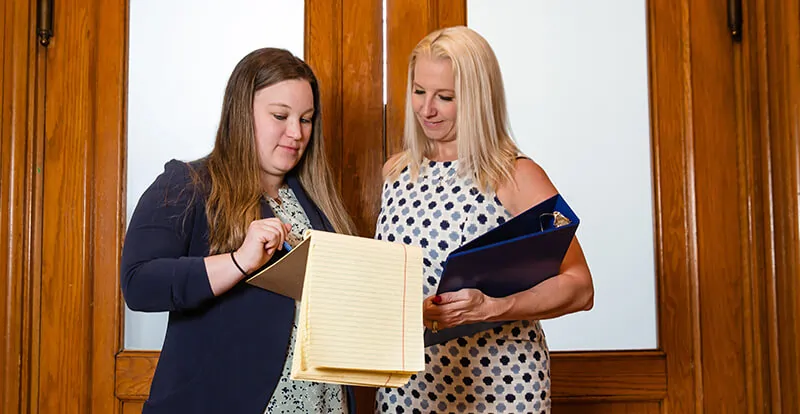Parallel Parenting – Co-Parenting In High Conflict

You’ve heard about “parallel play”, but have you heard about “parallel parenting?” Parallel parenting is a way to minimize the amount of interaction between the parents in high conflict situations. Parallel parenting is not co-parenting (in co-parenting, you need to have two parents who can put aside their differences work together to come to the best decisions for the children). In a co-parenting situation, the parents are able to attend extracurricular activities together, school meetings, doctor’s appointments and the like together without incidents. In a high-conflict situation, this is next to impossible and can devolve into a nasty scene that is detrimental as well as embarrassing for the child.
WHAT IS PARALLEL PARENTING?
Parallel parenting is a technique where divorced parents who really don’t want conflict to limit their interactions. Parallel parenting allows both parents to be involved in their child’s life, but without the added stress and uncertainty of the other parent’s involvement. How do you know if parallel parenting is for you? Let’s look at your current situation for a moment. Do you have good communication, or does it become a stand-off situation with one person not replying? Do you feel good about your current communication style? Are you able to convey the topic without any quarreling? If you not, parallel parenting may be a means to help resolve the current high conflict situation.
I’M INTRIGUED! TELL ME HOW TO GET THERE.
Laying the ground work for parallel parenting will take a bit of planning. If you are starting your divorce journey, the parallel parenting plan needs to be extremely specific in order to work. That means spelling out each little detail in regards to an exchange point that is public, exchange times, plans for the possibility of a cancellation, what to do if the other parent doesn’t arrive to pick up and a method for resolving a dispute. Sounds really controlling, doesn’t it? However, if the specifics are spelled out, that leaves nothing to argue about. If the other parent picks up the children from school on Friday and returns them to school on Monday, there is no opportunity for contact between you and the other parent. Granted, there will occasionally be an issue that arises out of the ordinary, but those moments can be managed with having contingency plans. A contingency plan will give the parents guidance as to what to do in a situation to avoid any further conflict. A few examples of inconveniences that could arise are an illness or accident, work-related issues, or a death in the family. As parents, we are prone to imagining all of the worst possible case scenarios and making mental plans as to what we might do if we find ourselves in that situation. In a parallel parenting plan, all of that mental imagery can be put to use.
One of the difficult tasks in a high conflict situation is communication with the other parent. At least once in this journey, a conversation has devolved into a stressful experience. If conversations continue to be stressful and futile, those experiences can make us wary to continue communication with the other parent. There are multiple ways to redirect communication with using neutral, fact-based information to the other parent. Apps such as AppClose or Our Family Wizard are designed to facilitate neutral communication. Using an app instead of personal texts or email allows for the ability to synch calendars (less words, YAY!), a “tone meter” can be downloaded to assist with keeping messages neutral (OFW) and you can upload documents such as a parenting plan for easy access, plus having a documented trail of communication. Now that you have the technology in place, you can shift the discussions to a more impersonal tone. Communication needs to be viewed as a business transaction, by being brief, to the point, and unemotional.
CONTROL WHAT YOU CAN.
To effectively parallel parent, it is important that you take a moment to define the things that are within your control. That means things that happen in your home. Once you’ve identified these things, set specific boundaries and hold on to them. Children can sense the discord between two parents. As children do, they will exploit that discord as much as possible. It’s all normal, it’s what children do, and they even do it in an intact family. Your job is to not let that affect how you parent. By setting clear guidelines and routines, your children will know exactly what to expect while at your home. This is an effective “magic spell” against the “other parent card”.
LET GO OF WHAT YOU CAN’T CONTROL.
To a degree, you cannot control what happens in the other parent’s home. If the other parent decides showers before bed are appropriate and you prefer the kids shower in the morning, that is an example of something to leave alone. After all, the kids are showering. If you have a contentious relationship with the other parent, trying to have a discussion about shower timing will most likely become a battle of wills that no one wins. In a parallel parenting situation, this would be an example of something to “let go”, because you are unlikely to convince the other parent that showering before bed is unreasonable, and will most likely result in more conflict.
One way to determine if the situation is important enough to put yourself into a potentially conflicted situation is to employ the “5 x 5 rule”. In short, the 5 x 5 rule means you shouldn’t spend more than 5 minutes worrying about something that isn’t going to matter in 5 years. Will it really matter in 5 years if the kid showered in the morning at your house or at bed time at the other parent’s house? If your answer is no, take a deep breath, let that breath out and let the issue go.
If there is a safety concern such as not wearing a seat belt while traveling in a vehicle, by all means, bring that up gently to the other parent via your communication app of choice. How you phrase the concern may make all the difference. Sending a heated, emotional rant will most likely be met with a likewise response. Bringing it up to the other parent in a concerned, matter of fact way (Katy says she hasn’t been wearing her seat belt. Please remind her to do so for her own safety.) may get the appropriate response of making sure the child is wearing her seat belt in the future.
WAIT…. WHAT’S IN IT FOR ME?
The benefits of parallel parenting can result in reduced interference, minimized stress, minimal interaction, gradual healing and official communication. When the stress level goes down, it becomes easier to shift your focus from the actions that cause stress and begin to focus on the parent you want to be. The part of you that was stressing over what was happening at the other parent’s home can now be free to engage in parenting within your own space with your style. Think of how your children can benefit from a contented, relaxed parent who isn’t fretting over toothbrushing at the other parent’s home, or isn’t all wound up over the child not having a shower. By removing another source of stress, you are making space to heal after the divorce.
At O’Connor Family Law, we can help you work through a divorce because we’ve been there before. Our team will help you throughout each step of the process while protecting your rights and defending you from any attack from your spouse.
To learn more about divorce in Massachusetts or Rhode Island and to speak with a member of our team you can call us at 774-703-3755 or by visiting our Contact Us page.


